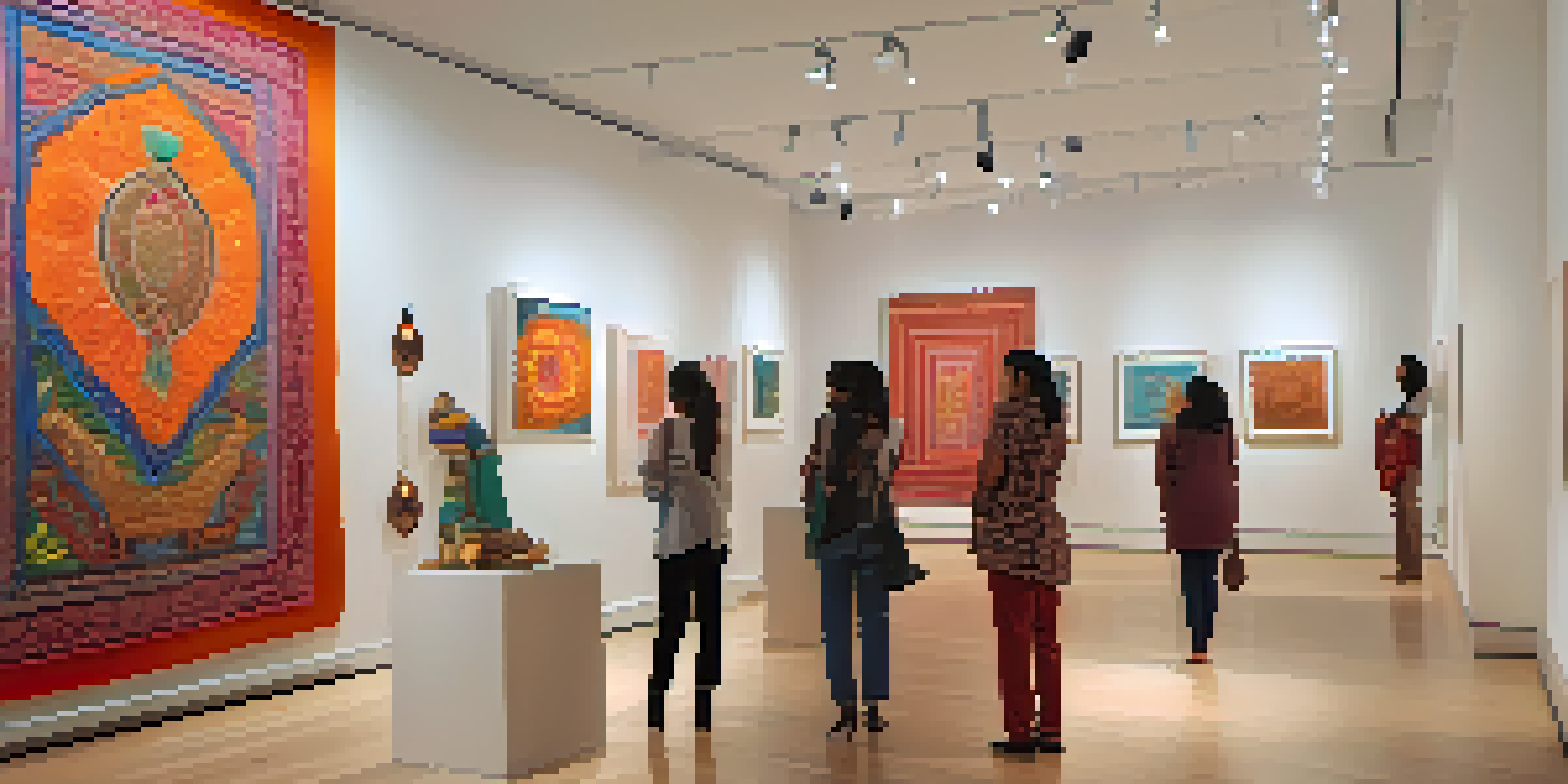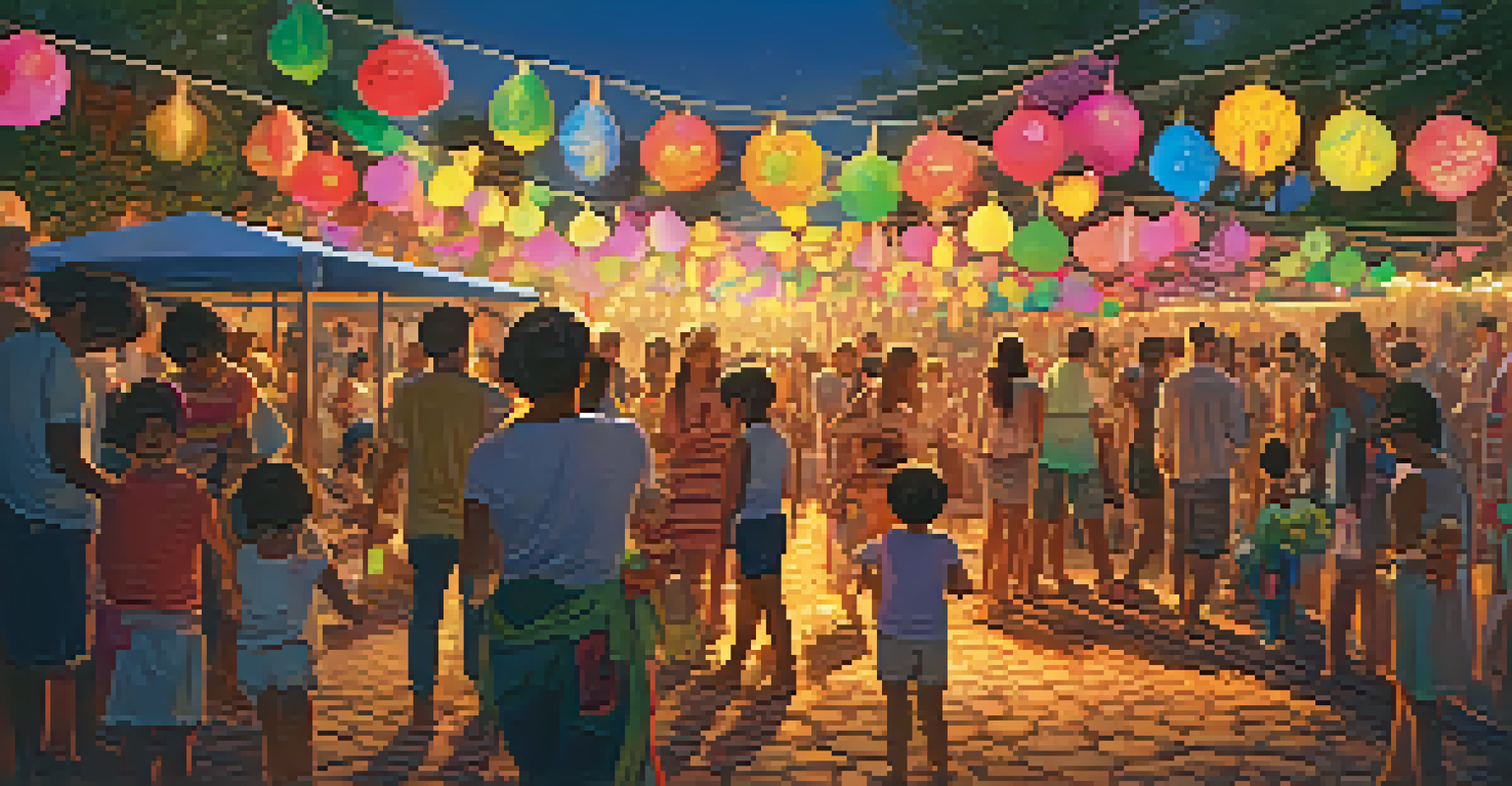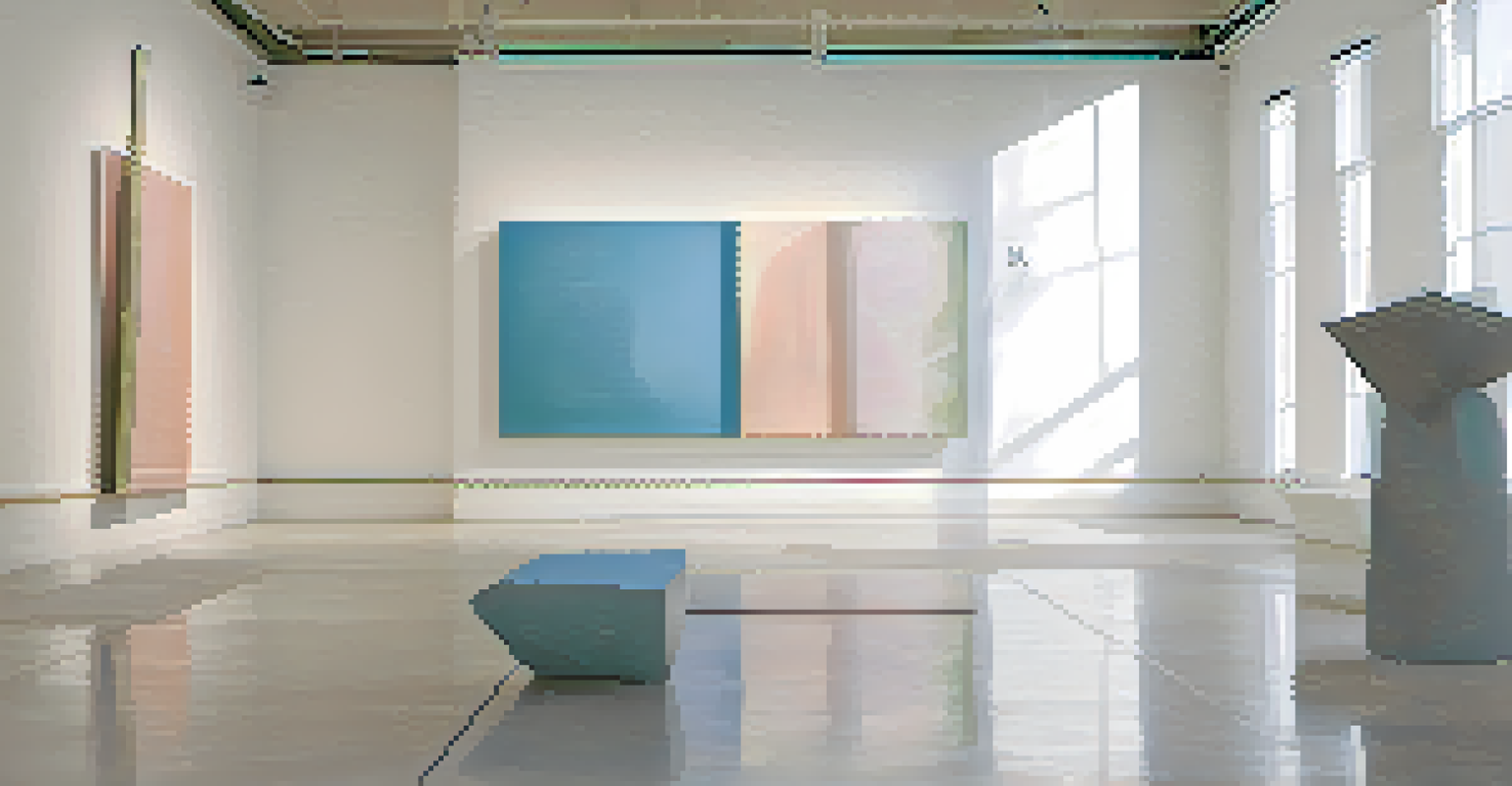The Evolution of Art Installations in India: A Historical Overview

Understanding Art Installations: Definition and Significance
Art installations are immersive artworks that transform spaces, inviting viewers to engage in a multi-sensory experience. Unlike traditional art forms, installations often incorporate various materials and media, blurring the lines between art and environment. They encourage interaction and provoke thought, making them a crucial aspect of contemporary art.
Art enables us to find ourselves and lose ourselves at the same time.
In India, the concept of art installations has evolved significantly over the years, reflecting societal changes and cultural dynamics. From ancient temple art to modern exhibitions, installations have become a powerful medium for artists to express complex narratives. This evolution showcases not only artistic innovation but also the changing perceptions of art within Indian society.
As we delve into the historical journey of art installations in India, we’ll uncover how these creations have mirrored the socio-political landscape and contributed to the global art scene. The story of installations is not just about art; it's about identity, community, and the conversation between tradition and modernity.
Ancient Roots: Art Installations in Traditional Indian Culture
The roots of art installations in India can be traced back to ancient temples, where sculptures and murals were intricately woven into the architecture. These masterpieces were not just decorative but served spiritual and narrative purposes, creating a holistic experience for worshippers. The immersive nature of these art forms laid the groundwork for future installations.

Festivals and rituals in ancient India also featured large-scale art forms that can be likened to modern installations. For instance, elaborate decorations during Durga Puja or other festivals created spaces that engaged the community, incorporating elements of performance and participation. This early form of installation art fostered a sense of belonging and collective experience.
Art Installations Reflect Society
Art installations in India serve as a mirror to society, reflecting cultural identity and socio-political landscapes.
As we explore these ancient practices, it becomes clear that the essence of installations has always been about connection—between the viewer, the artwork, and the environment. This connection persists through the centuries, evolving to adapt to contemporary themes and artistic expressions.
Colonial Influence: Shifts in Art Practices
The British colonial period marked a significant shift in Indian art practices, introducing new materials and styles. Artists began to experiment with Western techniques while still drawing from indigenous traditions, leading to a fusion of influences. This period saw the emergence of the Bengal School, which emphasized narrative and symbolism, setting the stage for modern installations.
The role of the artist is to ask questions, not to answer them.
During this time, public spaces became canvases for political expression, with artists creating installations that commented on colonialism and identity. These works often involved community participation and collective storytelling, reflecting the struggles and aspirations of the Indian populace. The installation became a powerful tool for social commentary.
The colonial influence on Indian art installations illustrates how external forces can shape artistic expression. This blending of styles and ideas laid the groundwork for the post-independence art movement, where artists sought to redefine their identity through innovative installations.
Post-Independence Era: Art Installations and National Identity
After gaining independence in 1947, Indian artists began to explore themes of nationalism and identity through their work. This period saw the rise of prominent artists who used installations to critique social issues and celebrate cultural heritage. The installations became a means of reclaiming narrative and expressing the complexities of a newly independent nation.
Art movements like Progressive Artists' Group and the Delhi Art Movement emphasized the importance of installations in conveying messages about modern India. Artists experimented with various materials, incorporating elements from traditional crafts to create works that resonated with both local and global audiences. This experimentation enriched the artistic landscape of India.
Ancient Roots Influence Modern Art
The evolution of art installations in India traces back to ancient traditions, where immersive experiences were integral to cultural practices.
The post-independence era exemplifies how art installations serve as a mirror to society, reflecting the evolving identity of the nation. Through their innovative approaches, artists have continued to foster dialogues about culture, history, and the future of India.
Contemporary Scene: Global Influence on Indian Installations
In recent decades, the global art scene has significantly influenced Indian art installations, introducing new concepts and mediums. Artists are now exploring technology, multimedia, and interactive elements, creating immersive experiences that engage a wider audience. This globalization of art has allowed Indian installations to reach international platforms and galleries.
Contemporary Indian artists often address pressing global issues such as climate change, migration, and social justice through their installations. By incorporating local narratives into global conversations, these artists create works that resonate on multiple levels. This blend of local and global perspectives enriches the artistic dialogue in India.
The contemporary scene is a testament to the adaptability and resilience of Indian art installations. As artists continue to push boundaries, they not only preserve their cultural heritage but also contribute to the ever-evolving global art narrative.
Famous Installations: Icons of Indian Art
Several installations have become iconic in the Indian art landscape, capturing the imagination of audiences both domestically and internationally. For instance, Subodh Gupta's 'Very Hungry God' is a powerful commentary on globalization and consumerism, crafted from everyday objects. Such works highlight the ability of installations to provoke thought and inspire dialogue.
Similarly, installations like Anish Kapoor's 'Descent into Limbo' challenge viewers' perceptions and invite them to confront their emotions. These pieces often incorporate elements of surprise and wonder, engaging the viewer in a unique way. The impact of these installations extends beyond the art world, influencing popular culture and societal discussions.
Globalization Shapes Indian Art
Contemporary Indian artists are infusing global themes into their installations, addressing issues like climate change while preserving local narratives.
These famous installations not only showcase the creativity and skill of Indian artists but also underscore the diverse narratives that can be expressed through this medium. They serve as milestones in the evolution of art installations in India, reflecting the country's rich cultural tapestry.
The Future of Art Installations in India
As we look to the future, art installations in India are poised to evolve even further, embracing new technologies and innovative practices. Artists are likely to continue exploring themes relevant to contemporary society, from environmental issues to identity politics. This ongoing evolution ensures that installations remain a vital part of the artistic landscape.
Collaboration between artists, curators, and communities will play a crucial role in shaping the future of installations. By fostering dialogue and participation, these collaborations can lead to more inclusive and diverse artistic expressions. This community-driven approach will enrich the narrative surrounding art installations in India.

Ultimately, the future of art installations in India is bright, with endless possibilities for creativity and expression. As artists continue to push boundaries and engage with their audiences, they will undoubtedly leave a lasting impact on both the art world and society as a whole.